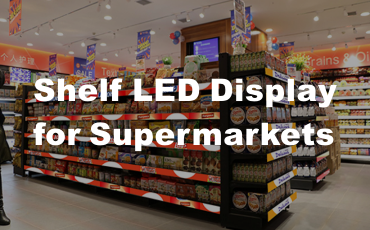LED video walls have become increasingly popular in recent years, not only in commercial spaces like shopping malls and concert venues, but also in homes and offices.
These stunning displays can create incredible visual experiences and engage audiences. However, in order to operate an LED video wall effectively, you need an LED video wall controller.
What is an LED video wall controller?
An LED video wall controller is typically a hardware device that controls and manages an LED display.
It allows users to send video and audio signals to the video wall, control the layout and arrangement of content, and adjust the brightness and color settings of the display.
It can connect to the LED display through a variety of interfaces, such as HDMI, DVI, VGA, etc.
The functions of the controller include adjusting parameters such as brightness, color, resolution, etc. to ensure that the LED video wall displays the best.
Essentially, the controller is the brain of the LED video wall, ensuring that everything runs smoothly and looks great.

Types of LED Video Wall Controllers
There are several types of LED video wall controllers on the market, each with its own set of features and capabilities. The two most common types are hardware-based controllers and software-based controllers.
Hardware-based controllers are physical devices that install directly into the video wall system.
They typically offer more advanced features and better performance than software-based controllers, but they can also be more expensive.
Hardware-based controllers are ideal for large video walls that require a high-quality, seamless display.
Software-based controllers, on the other hand, are programs that are installed on a computer or digital media player.
They are more affordable than hardware-based controllers and are easier to set up and use.
Software-based controllers are ideal for smaller video walls or for users who want a simpler, more cost-effective solution.
Key Features of LED Video Wall Controllers
There are several key features to consider when choosing an LED video wall controller:
1. Input and output ports: Make sure the controller has enough input and output ports to connect all of your devices, such as computers, media players, and cameras.

2. Resolution support: The controller should support the resolution of your LED video wall to display high-quality images and videos.
3. Video processing capabilities: Look for controllers with advanced video processing features, such as scaling, cropping, and color correction, to enhance the visuals of your content.
4. Remote control: Controllers with remote control capabilities allow users to adjust settings and content from a distance, making it easier to manage your video wall.
5. Content Management System: Some controllers come with built-in content management systems, allowing users to easily schedule and organize their content.
Benefits of Using an LED Video Wall Controller
There are several benefits to using an LED video wall controller:
1. Enhanced visual performance: A controller can improve the visual quality of an LED video wall by optimizing color, brightness, and contrast.
2. Simplified content management: With a controller, users can easily upload, schedule, and manage content on their video wall, saving time and effort.

3. Remote control: Many controllers allow users to control the video wall from a distance, making it more convenient to make adjustments and changes.
4. Scalability: A controller can support multiple video walls and displays, allowing users to expand their setup as needed.
Overall, an LED video wall controller is an essential component of any LED video wall system.
It provides users with the tools and features they need to create stunning visual experiences and effectively manage their content.
By understanding the key features and benefits of an LED video wall controller, users can make an informed decision when choosing a controller that fits their needs.





